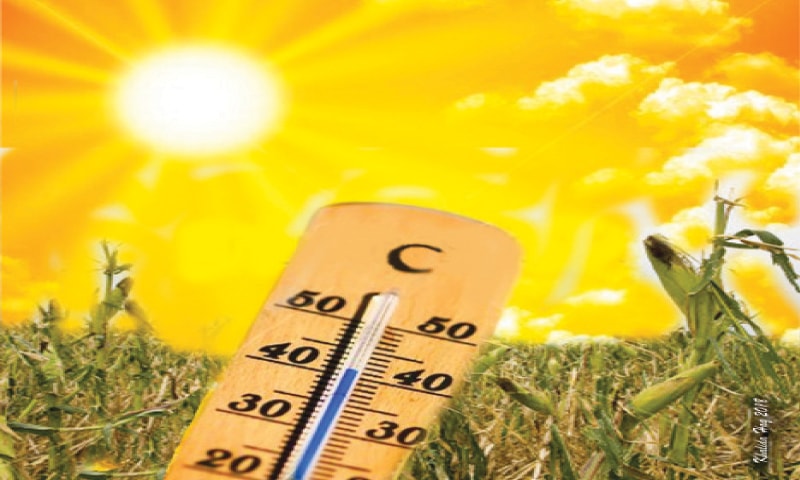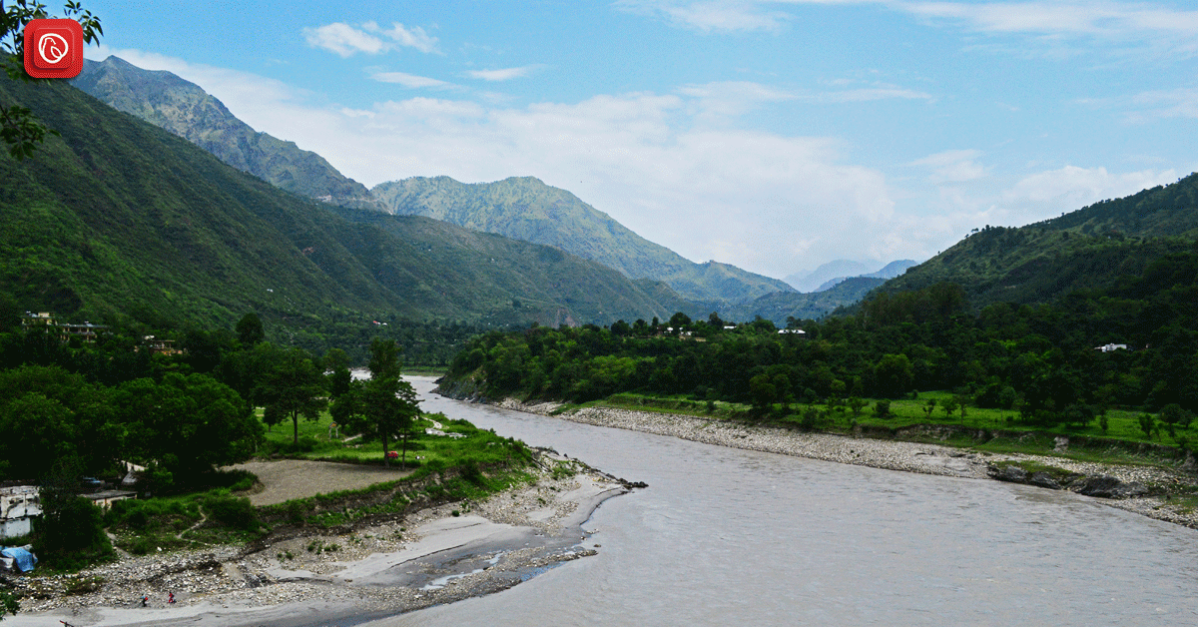In recent years, Pakistan has experienced some of the most intense heat waves on record, leading to widespread heat stress, illness, and death, particularly among vulnerable populations such as the elderly and young children.
Additionally, heat waves in Pakistan can negatively impact agriculture by reducing crop yields, causing water scarcity, and increasing the risk of wildfires. Furthermore, they can also lead to increased energy demand and decreased worker productivity, leading to economic losses.
Despite the numerous and far-reaching consequences of heat waves in Pakistan, they are expected to become even more frequent and severe in the coming years as a result of climate change.
Graana.com provides further details on heatwaves in Pakistan below, including their threats, causes and mitigation strategies.
What Are Heat Waves?

Heat waves are prolonged periods of excessively high temperatures that occur in a particular region. They are defined as an extended period of abnormal heat, typically lasting several days to several weeks, and characterised by temperatures that are significantly above average for that location.
Heat waves can produce a wide range of effects, including increased heat-related illnesses and deaths, reduced crop yields, increased energy demand, decreased worker productivity, and heightened risk of wildfires.
They can also exacerbate existing problems, such as water scarcity and air pollution, and can have long-term impacts on public health and the environment. Heat waves are a growing concern globally, particularly in the context of climate change, which is causing more frequent and severe heat waves in many regions.
Threats of Heat Waves in Pakistan
Following are some of the most common threats from a heat wave in Pakistan:
- Impact on the health of the vulnerable population
- Agricultural impact
- Economic impact
- Environmental impact
Impact on the Health of the Vulnerable Population
Heat waves can damage the health of vulnerable individuals, including the elderly, children, people with pre-existing health conditions, and those who work outdoors. The high temperatures can lead to heat stress, heat exhaustion, and heat stroke, all of which can be life-threatening.
The elderly and children are particularly at risk because their bodies are less able to regulate their internal temperature, making them more susceptible to heat-related illnesses. People with pre-existing health conditions, such as cardiovascular disease, respiratory disease, and diabetes, are also at increased risk of heat-related illness, as high temperatures can exacerbate their symptoms.
Outdoor workers, such as construction workers and farmers, are also at increased risk of heat-related illness as they are exposed to high temperatures for extended periods of time. This can result in decreased worker productivity and increased absenteeism, leading to economic losses.
Agricultural Impact
Heat waves can lead to reduced crop yields, decreased crop quality, and increased risk of crop failure. High temperatures can stress crops, reducing their growth and productivity. They can also increase the risk of disease and pest outbreaks, as well as increase water demand, leading to water scarcity and reduced irrigation capacity.
In addition, heat waves can cause soil moisture deficits, leading to decreased root growth and reduced nutrient uptake, further reducing crop yields. They can also increase the risk of wildfires, which can damage crops and agricultural land. These can result in decreased food security and increased food prices, particularly for communities that rely heavily on agriculture for their livelihoods.
Economic Impact
Heat waves can have significant economic impact, including decreased worker productivity, increased energy demand, and reduced economic output. The extreme temperatures can lead to heat stress and illness among workers, which can lead to losses in economic output and reduced competitiveness, particularly in sectors that are highly dependent on manual labour, such as construction and agriculture.
They can also increase energy demand as people use air conditioning and other cooling technologies to cope with high temperatures. This can lead to increased energy costs and reduced energy security, particularly in regions with limited energy infrastructure.
Furthermore, heat waves can exacerbate existing problems, such as water scarcity and air pollution, leading to increased costs for water treatment and air quality management.
Environmental Impact
Heat waves can increase the risk of wildfires, and contribute to climate change, exacerbating the risk of future heat waves. They can also cause water crisis, leading to reduced water availability for irrigation, drinking, and other uses.
Additionally, high temperatures can increase the risk of water-borne diseases, as well as decrease water quality by promoting the growth of toxic algae and bacteria.
Furthermore, they can alter the distribution and abundance of species and disrupt ecosystems. This can lead to a decline in the populations of some species, as well as changes in the composition and structure of ecosystems. These can have cascading effects, reducing the resilience of ecosystems to future stressors.
Causes of Heat Waves in Pakistan
Following are some of the most common reasons for heat waves in Pakistan:
- Climate change and global warming
- Urbanisation and land use changes
- Decrease in vegetation cover
- Natural variability
Climate Change and Global Warming

Climate change and global warming are major drivers of heat waves, as the increasing temperatures increase their frequency and severity. Human activities, such as burning fossil fuels and deforestation, are releasing large amounts of greenhouse gases into the atmosphere, which trap heat and cause the planet to warm. This causes temperatures to increase across the globe.
Heat waves are projected to become more frequent, intense, and longer-lasting as the planet continues to warm. This will have serious consequences for human health, agriculture, the economy, and the environment. Climate change will also exacerbate existing problems, such as water scarcity and air pollution, leading to increased costs for water treatment and air quality management.
Urbanisation and Land Use Changes

The urban heat island effect refers to the phenomenon where urban areas have higher temperatures than rural areas due to factors such as increased concrete and asphalt surfaces, reduced green spaces, and increased energy consumption.
This can increase the risk of heat stress and heat-related illnesses, particularly for urban residents who are more vulnerable due to factors such as poverty and limited access to cooling technologies.
Land use changes like deforestation and urbanization can worsen local weather patterns, causing more severe heat waves. Deforestation reduces shading and evapotranspiration from forests, increasing temperatures. Urbanization changes the land’s surface characteristics and energy balance, affecting local weather patterns.
Decrease in Vegetation Cover
Trees and other vegetation provide shade, cool the air through evapotranspiration, and reduce the amount of heat absorbed by the surface of the earth. When vegetation cover is reduced, their impact is reduced, increasing temperatures and the risk of heat waves.
Deforestation and loss of green spaces worsen climate change by reducing carbon absorption and releasing carbon into the atmosphere. We must take radical steps to reduce our carbon footprint.
Natural Variability
Heat waves are a natural phenomenon and can occur due to both human and natural factors. However, their frequency and intensity can be influenced by natural variabilities, such as large-scale climate patterns like El Niño-Southern Oscillation (ENSO) and the Arctic Oscillation (AO), and regional-scale weather patterns like high-pressure systems.
For example, the ENSO is a natural climate pattern that can alter atmospheric circulation patterns and cause changes in precipitation and temperature. The AO is another natural climate pattern that can change the position and strength of the polar jet stream.
Mitigation Strategies for Heat Waves in Pakistan
The following are the most effective strategies for tackling heat waves in the country:
- Increasing green spaces
- Implementing heat wave early warning systems
- Improving infrastructure and access to resources
- Promoting public awareness and education
Increasing Green Spaces

Increasing green spaces in urban areas can reduce the risk of heat stress and heat-related illnesses, while also improving air quality and promoting physical activity and social interaction. To achieve this, urban greening programs and sustainable land use practices should be implemented. Early warning systems for heat waves can also help communities prepare and respond effectively.
These systems can include various components, such as weather forecasting and monitoring, health surveillance, and communication and outreach strategies.
Communities can avoid heat exposure by getting accurate information and taking proactive measures. These include seeking shelter, staying hydrated, and avoiding strenuous activity during peak hours. Early warning systems help healthcare providers and emergency responders to support those most at risk.
Improving Infrastructure and Access to Resources
By providing access to adequate housing, clean water, and healthcare facilities, communities can reduce their vulnerability to heat-related illnesses. Improved infrastructure in urban areas and better access to clean water and healthcare facilities in rural areas can reduce heat exposure and prevent heat-related illnesses.
Promoting Public Awareness and Education
Educating the public about heat waves can help prevent heat-related illnesses by promoting proactive measures to reduce exposure to heat.
Public awareness campaigns can target different populations. These include children, the elderly, and those with chronic health conditions, in both urban and rural communities. Educating communities on the signs, prevention, and treatment of heat-related illnesses can improve their ability to stay safe in hot weather.
Education programs can target healthcare providers, emergency response organizations, and policymakers to improve their ability to assist vulnerable populations.
For more related content, visit Graana.com.




